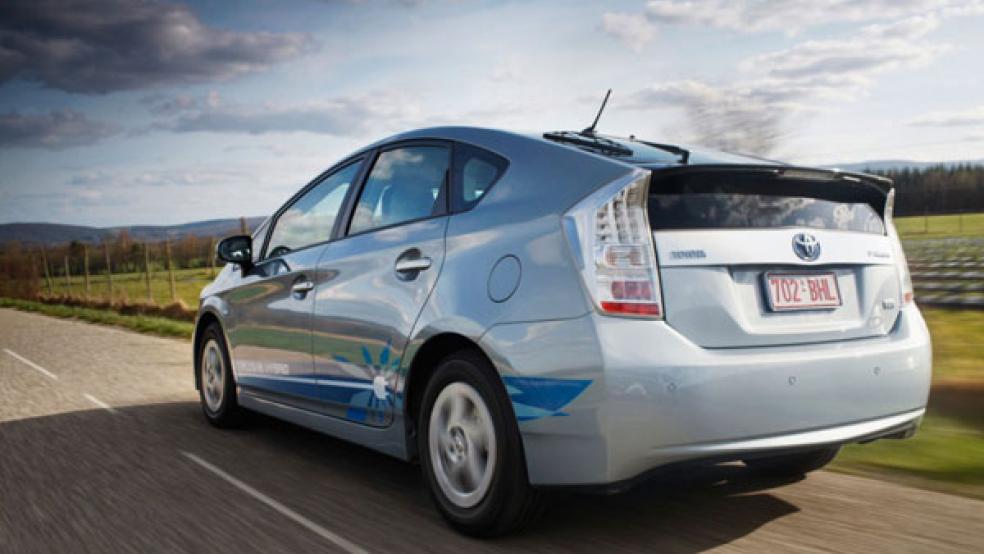This has been a great year for carmakers and dealers. But next year may be an even better one for carbuyers.
Despite a burst of sales last month, showrooms and back lots have been filling up faster than salespeople can close deals. That could be a problem for manufacturers and sellers if it continues, but buyers could see richer incentives and better deals.
Automakers aren't alone in seeing inventories starting to pile up. Sluggish sales in the second half created a third-quarter backlog of more than $160 billion worth of unsold goods, which accounted for roughly half of the surprisingly strong 3.6 percent expansion in the economy.
The government shutdown in early October didn't help, leaving many consumers wondering how long the insanity would last and whether it was hurting the economy. But, after the dust had settled, sidelined carbuyers returned to the market in droves last month.
Unlike general merchandise retailers, which squeezed a 2.3 percent sales gain from tightfisted shoppers on Thanksgiving and Black Friday, car dealers posted a year-over-year sales increase of 40 percent for the weekend.
Related: 10 Priciest Classic Cars
"We recovered the sales that had been postponed in September, October and November," Mike Jackson, AutoNation CEO, told CNBC. "Everybody woke up the day after Thanksgiving and said, 'You know, I feel good enough to go back into the marketplace and buy a car.' It was a huge weekend for the entire industry."
Consumers were also enticed back into showrooms by healthy discounts and incentives, which were up by about 4 percent overall last month and about 7 percent higher than a year earlier, according to RBC Capital Markets auto analyst Joseph Spak.
Honda is handing dealers $3,000 for every car sold over last year's numbers.
"Every manufacturer had special promotions," Jackson said. "We had special promotions and extended hours. Everybody knew we had to get the market going again after the government shutdown."
But when the sale-a-thons were over, inventories of all model light vehicles were still about 14 percent higher than the same time last year. Some models, especially small and midsize ones, are backing up faster than others.
Related: The High-Tech Future of Cars
Ford announced that it would cut back about a week's worth of production of its Fusion model next month. But most automakers are keeping to production schedules, confident that the strong sales pace will continue into 2014.
"December's a low production month and with the industry continuing to improve, we feel like we're in a pretty good place," said Kurt McNeil, head of U.S. sales forGeneral Motors. "We're not concerned about our inventory levels."
The industry is better positioned to sweeten deals to move cars out of the showroom. In the past, overproduction prompted incentives and discounts that affected profits. But the restructuring after the Great Recession shrank the industry's size and cost structure, leaving manufacturers more nimble and better able to sustain promotions.
"If you go back to middle of the last decade, these guys couldn't make money when sales were at 17 million [a year]," said Spak at RBC. "Now they can break even at 10.5 to 11 million units."
Though the inventory backlog may force deeper price cuts, dealers expect to see solid foot traffic into the new year. After years of deferring a car purchase, Americans' vehicles are on their last legs. That's forced many to trade in their aging clunkers even as they tighten other spending.
Related: Why Americans Still Don't Drive Electric Cars
This year, the average age of passenger cars and light trucks on American roads hit a record 11.4 years—up from 9.6 in 2002, according to data from IHS Polk.
The industry's confidence in continued strong sales is also bolstered by record low interest rates, which have made buying a car more affordable than it has been in over a decade. And consumers have an easier time qualifying for car loans than for other types of credit.
"They've certainly surprised in the first half, when you would have thought payroll tax hikes would have an impact on a cyclic industry, and they've continued to fare well," he said. "This is more of a secular rebound that has more a marathoner's legs than a sprinter's legs."
But all cycles come to an end. At some point, enough U.S. carbuyers will have traded in their clunkers to begin slowing sales.
"I just think the pace is going to be more moderate and the largest gains from [pent-up demand] is behind us," said Spak at RBC. "We're starting to see the average age of the cars on the road plateau."
This article originally appeared at CNBC.com. Read more from CNBC:
Overstocked retailers offering epic holiday bargains
GM does a U-turn on Chevy in Europe
Black Friday spurs strong auto sales




